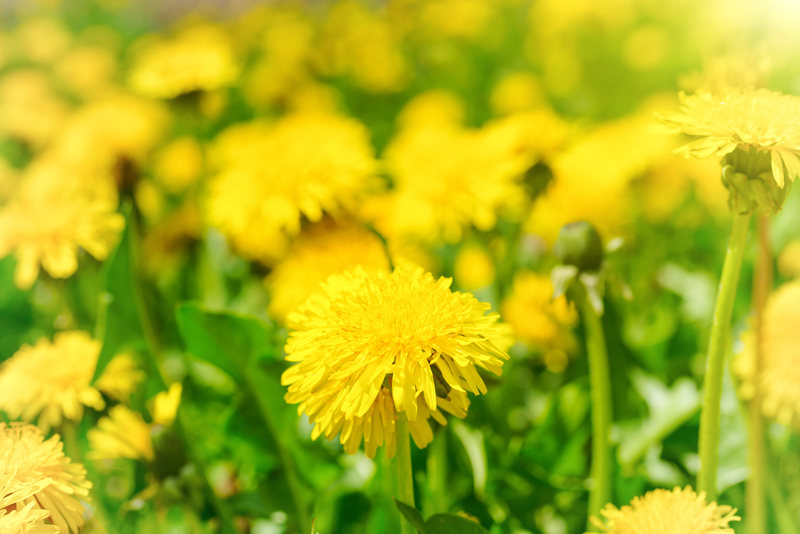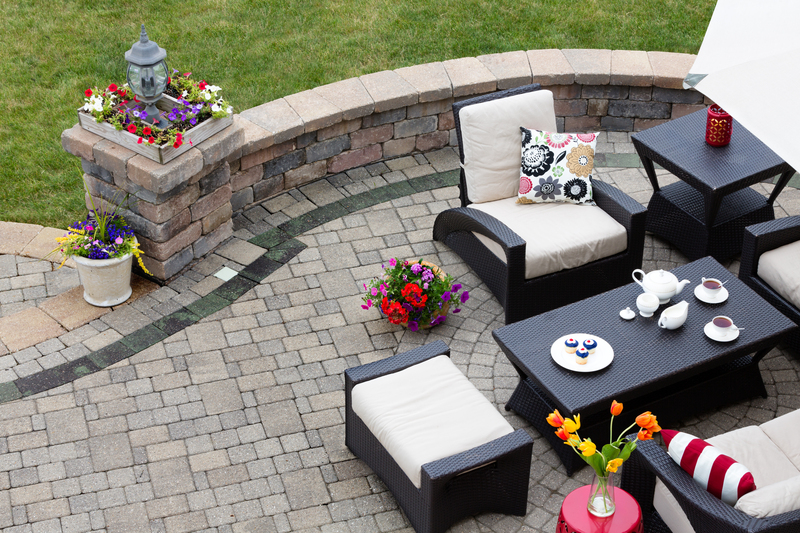The Art of Crafting Shapes in Hedge Trimming
Posted on 13/08/2025
The Art of Crafting Shapes in Hedge Trimming
Hedge trimming is not just a gardening chore--it's a fascinating blend of horticulture and artistry. The art of crafting shapes in hedge trimming has enchanted gardeners and homeowners for centuries, transforming simple greenery into living sculptures. Whether you're a seasoned professional or a passionate novice, mastering the techniques for shaping hedges can turn your garden into a stunning visual retreat.
Understanding the Basics of Hedge Sculpting
Before diving into advanced techniques, it's essential to grasp the basics of hedge sculpting. Proper hedge trimming enhances not only the appearance of your garden but also the health and vitality of your plants.
Why Shape Your Hedges?
- Increased Aesthetic Appeal: Well-shaped hedges serve as natural artwork, offering beauty and structure to any landscape.
- Improved Plant Health: Strategic trimming encourages healthy growth, allowing light and air to reach all parts of the hedge.
- Defined Spaces: Sculpted hedges can act as natural borders, creating outdoor "rooms" and guiding garden pathways.
- Wildlife Habitat: Thoughtfully trimmed hedges offer shelter for birds and beneficial insects.
Key Tools Required for Shaping Hedges
Investing in the right tools is vital for any form of creative hedge trimming:
- Hedge shears--for clean, precise cuts
- Electric or battery-powered trimmers--ideal for covering large areas quickly
- Pruning scissors--for detailed work and hard-to-reach spots
- String, stakes, or wire--to mark out patterns and guides
- Protective gloves and eye protection--for safety

Popular Shapes in Decorative Hedge Trimming
The creative possibilities in hedge shape design are endless, limited only by imagination and the type of plants used. Here are some of the most admired designs:
1. Formal Geometric Shapes
- Box: Simple, clean lines make the box shape a classic choice for boundary hedges.
- Sphere: Creating a round, globe-like form demonstrates expert skill in consistency.
- Pyramid and Cone: These add vertical interest and a sense of order to your garden.
- Tiered Layers: Helpful in creating height dynamics within the landscape.
2. Creative Topiary Art
- Animals: From peacocks to elephants, shaping animals out of hedges is a true testament to the topiarist's craftsmanship.
- Spirals and Fantasy Shapes: Swirls, zigzags, and abstract forms provide a whimsical touch to gardens of all sizes.
- Letters and Arches: Great for personalizing spaces or marking garden entrances.
Step-by-Step Guide to Crafting Shapes in Hedge Trimming
Shaping hedges requires patience, precision, and practice. Follow this comprehensive guide to embark on your journey:
1. Selection of the Right Plant
Not all hedge plants are equally suitable for shaped trimming. The best varieties for topiary and structured designs include:
- Boxwood (Buxus): Exceptionally dense foliage and slow growth make it a top choice.
- Yew (Taxus): Popular for its ability to recover quickly from cutting.
- Privet (Ligustrum): Fast growing and tolerant, perfect for larger shapes.
- Holly (Ilex): Attractive and robust with beautiful berries as a bonus.
2. Planning Your Design
- Sketch your vision on paper before you begin. Consider the existing landscape and how your hedge will fit in.
- Mark out the design using string or wire directly on the hedge for guidance.
- Take plant growth rates into account and allow extra space for expansion.
3. Initial Cutting
- Start by establishing the primary shape with broad, gentle strokes.
- Step back often to view the overall form and ensure symmetry and balance.
- For complex designs, work in stages, gradually refining the shape over multiple seasons.
4. Refinement and Detailing
- Use finer tools for detail work--pruning scissors give you greater control for intricate shapes.
- Maintain defined lines and crisp edges for the cleanest look.
- Trim regularly to prevent the hedge from growing out of the desired form.
5. Ongoing Maintenance
The secret to perfecting your hedge sculpture is consistent upkeep:
- Trim at least two to three times a year for most species--more often for fast growers.
- Feed and water your hedges regularly to encourage lush, dense foliage.
- Inspect for pests and diseases, treating them promptly to avoid blemishes or gaps.
Advanced Techniques for Artistic Hedge Trimming
Once you've mastered the basics, explore advanced techniques to take your hedge art to the next level:
The Use of Frames
Wire frames can be placed over young hedges, guiding growth into complex shapes. This method is widely used in commercial gardens and public parks to achieve consistency across multiple plants.
Pattern Carving
Skilled topiarists can carve intricate patterns--such as chevrons, waves, or latticework--into hedge surfaces. This requires both a sharp eye for detail and a steady hand.
Sculptural Compositions
Combine multiple shapes and sizes to create full garden scenes, such as animals surrounded by geometric patterns or storybook landscapes. These compositions require forethought in both planting and maintenance.
Common Mistakes in Shaping Hedges
Even the most enthusiastic gardener can slip up when crafting hedge shapes. Here are a few frequent errors and how to avoid them:
- Cutting Too Much Too Soon: Patience is vital; aggressive pruning can stunt plant health and destroy the intended form.
- Ignoring the Plant's Natural Form: Choose shapes that complement the hedge species--you'll have better results and less maintenance.
- Neglecting Sunlight: Unshaped, dense hedges can shade out inner leaves, leading to dieback and bald spots.
- Poor Tool Maintenance: Always keep blades sharp to achieve clean cuts and prevent plant disease.
The Health Benefits of Regular Hedge Trimming
Beyond aesthetics, regular hedge shaping contributes to the wellbeing of your plants and the environment:
- Promotes Vigorous Growth: Pruning encourages new shoots and denser foliage, leading to healthier, more robust plants.
- Prevents Disease: Removing old or infected branches helps prevent the spread of bugs and pathogens.
- Enhances Airflow: Well-shaped hedges allow light and air to reach the inner leaves, reducing disease risk.
- Supports Biodiversity: Dense, well-maintained hedges offer sanctuary for pollinators and garden wildlife.
Hedge Shaping Around the World
The art of sculpting hedges varies dramatically across cultures. Some notable global traditions include:
- European Topiary Gardens: Originating in the Renaissance, these formal gardens remain popular at English and French estates, known for their elaborate animal and geometric shapes.
- Traditional Japanese Gardens: Here, hedges are sculpted with subtlety, emphasizing natural forms that evoke tranquility and harmony.
- Modern Urban Parks: Urban designers use creative hedge trimming to soften hard city lines, integrating natural shapes into public spaces.
Eco-Friendly Practices in Hedge Shaping
It's important to combine the art of shaped hedge trimming with sustainable practices:
- Compost Waste: Use hedge trimmings to create organic compost for your garden.
- Opt for Battery Tools: Where possible, select battery-powered hedge trimmers to reduce carbon emissions.
- Conserve Water: Mulch around hedge bases to retain moisture and reduce watering needs.
- Native Plant Choices: Favor locally suitable plant varieties that require less maintenance and thrive naturally.

Future Trends in Artistic Hedge Sculpting
The world of hedge shape artistry continues to evolve, driven by innovation and creative ambition. Current trends include:
- Vertical Gardening: Shaping hedges as vertical garden walls saves space and introduces new aesthetic possibilities for urban environments.
- Interactive Designs: Hedges that integrate seating, lighting, or play features, merging outdoor art with functionality.
- Biophilic Design: Emphasizing the connection between people and nature, designers use live hedge shapes to soften architectural environments and improve wellbeing.
Conclusion: Celebrate the Living Canvas of Hedge Trimming
The art of hedge trimming shapes is both a science and an art form--requiring equal parts horticultural knowledge, creativity, and persistence. By mastering hedge crafting techniques, anyone can transform a plain garden into a captivating green gallery, delighting visitors and nurturing plant health in the process. Whether you aspire to create a whimsical topiary zoo, formal geometric alleys, or simply add personality to your landscape, hedge sculpting offers a rewarding outlet for creative expression.
Embrace the challenge, unleash your imagination, and let your garden be the canvas as you explore the limitless world of crafting shapes in hedge trimming!

